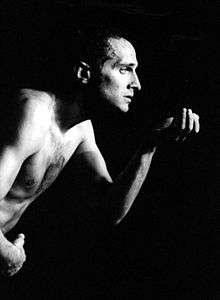Benito Gutmacher
Benito Gutmacher (Buenos Aires, 13 February 1950) son of Jewish Polish immigrants, is an actor, author and theatre director. In 1971, he went to Paris where he presented his one man show "Le cri du corps". Since then, he has been acting for more than 30 years in many European theaters and festivals.

Biography
Benito Gutmacher followed theatre courses in Buenos Aires with Juan Carlos Gené. He made his debut as an actor in 1970 with "Serjeant Musgrave's Dance" by John Arden. Inspired by the theories of Antonin Artaud and the dancer Iris Scaccheri, he travelled to Paris in 1971 where he presented his one-man show Le cri du corps ("The Cry of the Body") which received a positive review in Le Monde. After that, he acted during more than 30 years in theatres and festivals in France, Europe, Latin America und the USA. in 1972, he played at the Théâtre des Nations in Paris under the direction of Jean-Louis Barrault. In 1975, after a performance at the Teatro Regina in Buenos Aires, he was mentioned in the newspaper Clarín as one of the best actors of the year. In 1978, he met Alejandro Jodorowsky who suggested to present his show Tarot in Paris. In 1990, he performed at the La MaMa Experimental Theatre Club in New York and was described in The New York Times as "a virtuoso of movement".[1]
Gutmacher settled definitively in Europe where he worked for 15 years with Hector Malamud and Carlos Trafic. In Germany, he presented more than 25 plays with independent groups. In 1991, he directed "Paradise Later", a one-man show by Stephan Schulberg, member of The Living Theatre. Gutmacher has been directing dozens of courses and workshops in Germany, France and Switzerland. Since 1981 he lives in Freiburg, Germany. He is married and has 4 children.
One man shows
- Le cri du corps (Paris, 1972)
- Hamlet 74 (Paris, 1974)
- Tarot (Paris, 1980)
- Business-Business (Freiburg im Breisgau, Germany, 1983)
- Art and Toilet Paper (Freiburg im Breisgau, 1997)